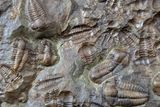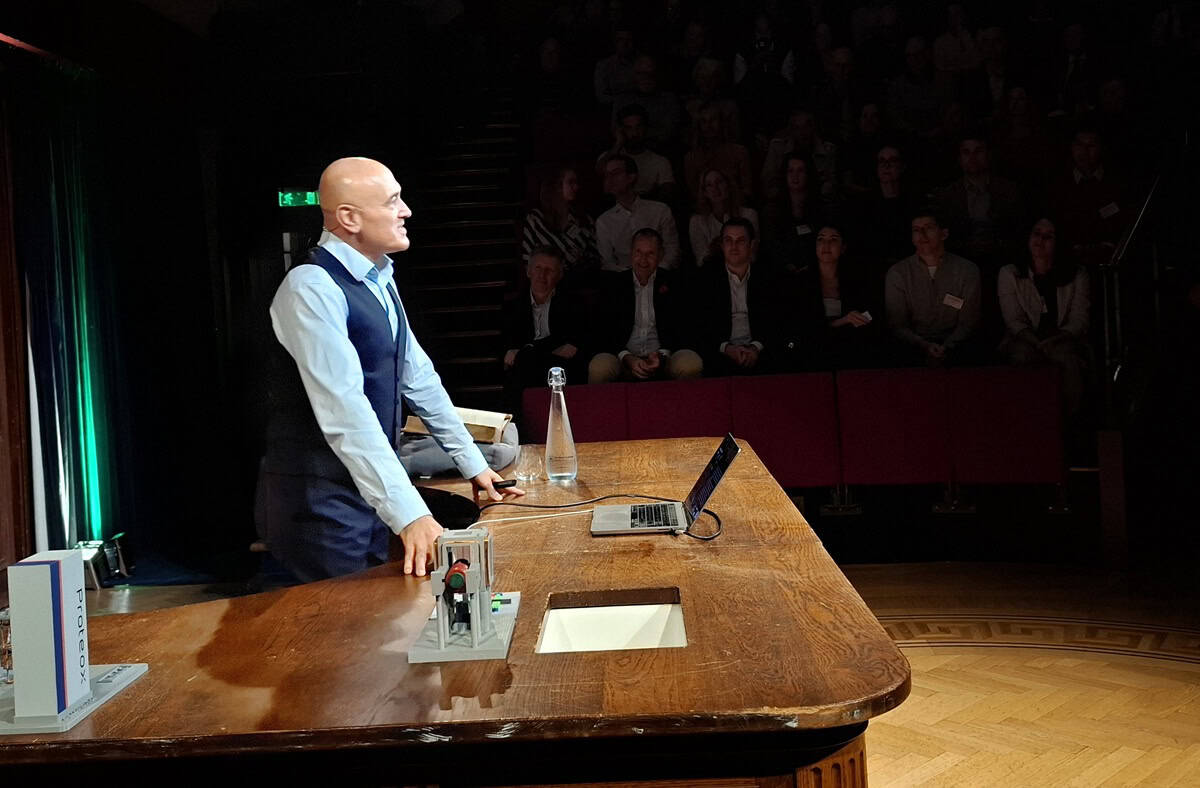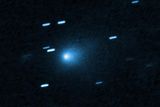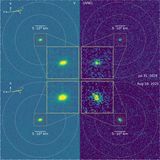Animals of the Cambrian Period Experienced a Great Evolutionary Surge, Shaping Life Today




After a successful second flight of New Glenn, includig landing the booster, Blue Origin is looking to perform its next launch early next year, possibly with the same booster.
The post Blue Origin planning next New Glenn flight for early next year appeared first on SpaceNews.

SES is adding another servicer to what is already the broadest and busiest satellite life-extension roster in the commercial geostationary orbit market, with five missions now scheduled between 2026 and 2029.
The post SES adds to GEO’s busiest servicing pipeline with Infinite Orbits contract appeared first on SpaceNews.



As the International Year of Quantum Science and Technology (IYQ) draws to a close, I hope you’ve enjoyed our extensive quantum coverage over the last 12 months. We’ve tackled the history of the subject, explored some of the unexplained mysteries that still make quantum physics so exciting, and examined many of the commercial applications of quantum technology. You can find most of our coverage collected into two free-to-read digital Quantum Briefings, available here and here on the Physics World website.
Over the last 100 years since Werner Heisenberg first developed quantum mechanics on the island of Helgoland in June 1925, quantum mechanics has proved to be an incredibly powerful, successful and logically consistent theory. Our understanding of the subatomic world is no longer the “lamentable hodgepodge of hypotheses, principles, theorems and computational recipes”, as the Israeli physicist and philosopher Max Jammer memorably once described it.
In fact, quantum mechanics has not just transformed our understanding of the natural world; it has immense practical ramifications too, with so-called “quantum 1.0” technologies – lasers, semiconductors and electronics – underpinning our modern world. But as was clear from the UK National Quantum Technologies Showcase in London last week, organized by Innovate UK, the “quantum 2.0” revolution is now in full swing.
The day-long event, which is now in its 10th year, featured over 100 exhibitors, including many companies that are already using fundamental quantum concepts such as entanglement and superposition to support the burgeoning fields of quantum computing, quantum sensing and quantum communication. The show was attended by more than 3000 delegates, some of whom almost had to be ushered out of the door at closing time, so keen were they to keep talking.
Last week also saw a two-day conference at the historic Royal Institution (RI) in central London that was a centrepiece of IYQ in the UK and Ireland. Entitled Quantum Science and Technology: the First 100 Years; Our Quantum Future and attended by over 300 people, it was organized by the History of Physics and the Business Innovation and Growth groups of the Institute of Physics (IOP), which publishes Physics World.
The first day, focusing on the foundations of quantum mechanics, included a panel discussion with physicists Fay Dowker (Imperial College), Jim Al-Khalili (University of Surrey) and Peter Knight. They talked about whether the quantum wavefunction provides a complete description of physical reality, prompting much discussion with the audience. As Al-Khalili wryly noted, if entanglement has emerged as the fundamental feature of quantum reality, then “decoherence is her annoying and ever-present little brother”.
Knight, meanwhile, who is a powerful figure in quantum-policy circles, went as far as to say that the limit of decoherence – and indeed the boundary between the classical and quantum worlds – is not a fixed and yet-to-be revealed point. Instead, he mused, it will be determined by how much money and ingenuity and time physicists have at their disposal.
On the second day of the IOP conference at the RI, I chaired a debate that brought together four future leaders of the subject: Mehul Malik (Heriot-Watt University) and Sarah Malik (University College London) along with industry insiders Nicole Gillett (Riverlane) and Muhammad Hamza Waseem (Quantinuum).
As well as outlining the technical challenges in their fields, the speakers all stressed the importance of developing a “skills pipeline” so that the quantum sector has enough talented people to meet its needs. Also vital will be the need to communicate the mysteries and potential of quantum technology – not just to the public but to industrialists, government officials and venture capitalists. By many measures, the UK is at the forefront of quantum tech – and it is a lead it should not let slip.

The week ended with Al-Khalili giving a public lecture, also at the Royal Institution, entitled “A new quantum world: ‘spooky’ physics to tech revolution”. It formed part of the RI’s famous Friday night “discourses”, which this year celebrate their 200th anniversary. Al-Khalili, who also presents A Life Scientific on BBC Radio 4, is now the only person ever to have given three RI discourses.
After the lecture, which was sold out, he took part in a panel discussion with Knight and Elizabeth Cunningham, a former vice-president for membership at the IOP. Al-Khalili was later presented with a special bottle of “Glentanglement” whisky made by Glasgow-based Fraunhofer UK for the Scottish Quantum Technology cluster.
The post The future of quantum physics and technology debated at the Royal Institution appeared first on Physics World.




Members of Maryland’s congressional delegation added their voices to concerns about the closure of offices and labs at the Goddard Space Flight Center.
The post Maryland congressional delegation seeks information on Goddard facility closures appeared first on SpaceNews.


Three Chinese astronauts have safely returned to Earth in the recently-launched Shenzhou-21 spacecraft after their own spacecraft was declared unsafe.
The post Shenzhou-20 astronauts safely return to Earth on Shenzhou-21 spacecraft after space debris damage concerns appeared first on SpaceNews.
Significant progress towards answering one of the Clay Mathematics Institute’s seven Millennium Prize Problems has been achieved using deep learning. The challenge is to establish whether or not the Navier-Stokes equation of fluid dynamics develops singularities. The work was done by researchers in the US and UK – including some at Google Deepmind. Some team members had already shown that simplified versions of the equation could develop stable singularities, which reliably form. In the new work, the researchers found unstable singularities, which form only under very specific conditions.
The Navier–Stokes partial differential equation was developed in the early 19th century by Claude-Louis Navier and George Stokes. It has proved its worth for modelling incompressible fluids in scenarios including water flow in pipes; airflow around aeroplanes; blood moving in veins; and magnetohydrodynamics in plasmas.
No-one has yet proved, however, whether smooth, non-singular solutions to the equation always exist in three dimensions. “In the real world, there is no singularity…there is no energy going to infinity,” says fluid dynamics expert Pedram Hassanzadeh of the University of Chicago. “So if you have an equation that has a singularity, it tells you that there is some physics that is missing.” In 2000, the Clay Mathematics Institute in Denver, Colorado listed this proof as one of seven key unsolved problems in mathematics, offering a reward of $1,000,000 for an answer.
Researchers have traditionally tackled the problem analytically, but in recent decades high-level computational simulations have been used to assist in the search. In a 2023 paper, mathematician Tristan Buckmaster of New York University and colleagues used a special type of machine learning algorithm called a physics-informed neural network to address the question.
“The main difference is…you represent [the solution] in a highly non-linear way in terms of a neural network,” explains Buckmaster. This allows it to occupy a lower-dimensional space with fewer free parameters, and therefore to be optimized more efficiently. Using this approach, the researchers successfully obtained the first stable singularity in the Euler equation. This is an analogy to the Navier-Stokes equation that does not include viscosity.
A stable singularity will still occur if the initial conditions of the fluid are changed slightly – although the time taken for them to form may be altered. An unstable singularity, however, may never occur if the initial conditions are perturbed even infinitesimally. Some researchers have hypothesized that any singularities in the Navier-Stokes equation must be unstable, but finding unstable singularities in a computer model is extraordinarily difficult.
“Before our result there hadn’t been an unstable singularity for an incompressible fluid equation found numerically,” says geophysicist Ching-Yao Lai of California’s Stanford University.
In the new work the authors of the original paper and others teamed up with researchers at Google Deepmind to search for unstable singularities in a bounded 3D version of the Euler equation using a physics-informed neural network. “Unlike conventional neural networks that learn from vast datasets, we trained our models to match equations that model the laws of physics,” writes Yongji Wang of New York University and Stanford on Deepmind’s blog. “The network’s output is constantly checked against what the physical equations expect, and it learns by minimizing its ‘residual’, the amount by which its solution fails to satisfy the equations.”
After an exhaustive search at a precision that is orders of magnitude higher than a normal deep learning protocol, the researchers discovered new families of singularities in the 3D Euler equation. They also found singularities in the related incompressible porous media equation used to model fluid flows in soil or rock; and in the Boussinesq equation that models atmospheric flows.
The researchers also gleaned insights into the strength of the singularities. This could be important as stronger singularities might be less readily smoothed out by viscosity when moving from the Euler equation to the Navier-Stokes equation. The researchers are now seeking to model more open systems to study the problem in a more realistic space.
Hassanzadeh, who was not involved in the work, believes that it is significant – although the results are not unexpected. “If the Euler equation tells you that ‘Hey, there is a singularity,’ it just tells you that there is physics that is missing and that physics becomes very important around that singularity,” he explains. “In the case of Euler we know that you get the singularity because, at the very smallest scales, the effects of viscosity become important…Finding a singularity in the Euler equation is a big achievement, but it doesn’t answer the big question of whether Navier-Stokes is a representation of the real world, because for us Navier-Stokes represents everything.”
He says the extension to studying the full Navier-Stokes equation will be challenging but that “they are working with the best AI people in the world at Deepmind,” and concludes “I’m sure it’s something they’re thinking about”.
The work is available on the arXiv pre-print server.
The post Neural networks discover unstable singularities in fluid systems appeared first on Physics World.

Virgin Galactic says it remains on schedule to complete development of its next-generation suborbital spaceplane and begin commercial flights before the end of 2026.
The post Virgin Galactic on track to begin commercial flights in 2026 appeared first on SpaceNews.

An Atlas 5 rocket sent Viasat’s second ViaSat-3 satellite toward geostationary orbit Nov. 13, bringing the U.S. broadband provider closer to operating a terabit-per-second giant it had hoped to debut six years ago.
The post ULA launches Viasat’s second shot at a terabit-class broadband satellite appeared first on SpaceNews.

SAN FRANCISCO – Canada’s SBQuantum has won an €800,000 ($932,000) European Space Agency contract to deliver a prototype quantum magnetometer for space-based Earth observation. Under the 21-month contract, announced Nov. 14, SBQuantum will upgrade the quantum diamond magnetometer delivered to ESA for testing and evaluation in 2024. The new version of the sensor will be […]
The post Canada’s SBQuantum wins contract to supply ESA magnetometer appeared first on SpaceNews.

